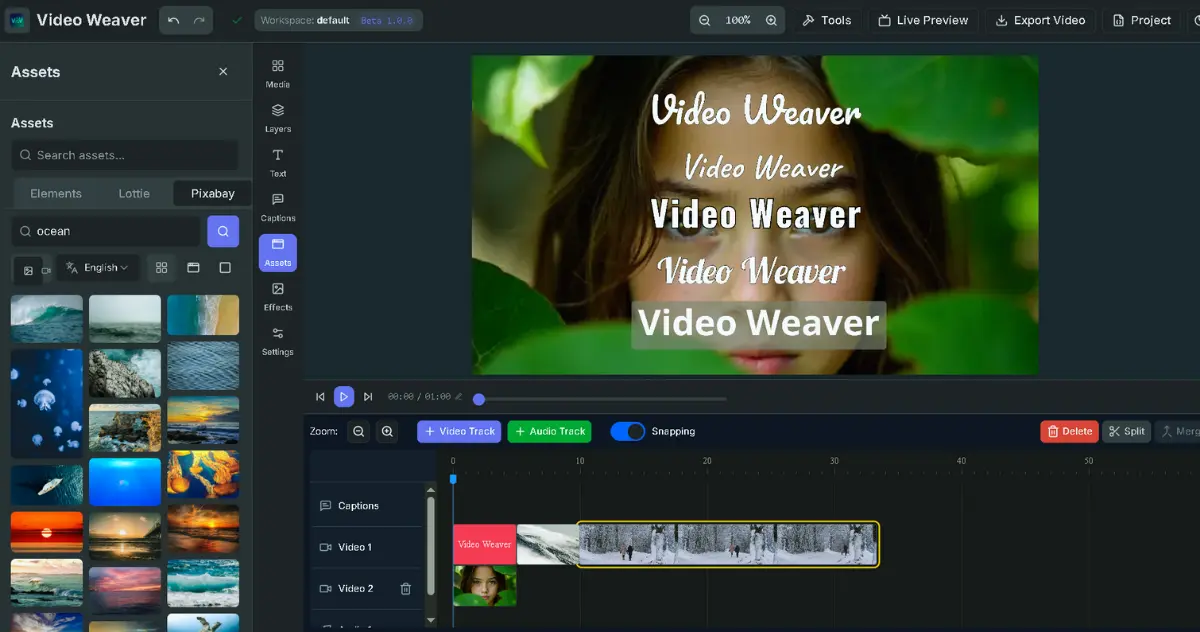Struggling with the complexities of 3D human modeling? Alibaba DAMO Academy’s groundbreaking LHM technology has arrived! With just a single photo, it can rapidly generate realistic 3D animated human models, revolutionizing the game. Discover how this breakthrough technology overcomes past challenges and unlocks limitless possibilities for future applications.
Imagine turning a person in a photo into a lifelike 3D animated character. Sounds like science fiction, right? Converting a flat image into a dynamic, three-dimensional model has always been a massive challenge. But recently, Alibaba DAMO Academy made waves with the launch of LHM (Large-scale Human body Model), a technology that seems to bring this sci-fi dream into reality!
Previous Methods? Well… They Hit Some Roadblocks
Let’s be honest: generating a fully animated 3D human model from just one photo has never been easy. A single image contains limited information—how can a computer figure out what the back of a person looks like? What’s the body shape under the clothing? And how should movements be simulated naturally?
There are plenty of tricky problems here:
- Ambiguity in Geometry: Since photos are 2D, accurately determining the depth and volume of different body parts is challenging. Lighting and angles can be misleading.
- Guessing Surface Textures: The material of clothes, the texture of skin—what we see in a picture can differ significantly from reality, making it difficult to recreate realistic details.
- Challenges in Motion Simulation: When people move, muscles stretch, and clothes wrinkle. Separating these dynamic effects from the body’s structure is extremely complex.
Most past techniques could only generate static models, often relying on 3D datasets captured using specialized lab equipment. However, such data is very different from everyday photos, leading to poor real-world usability.
Some approaches used video analysis for reconstruction, which worked better but came with limitations: strict filming conditions, high computational costs, and long processing times. This made them impractical for real-time applications.
Game-Changer: What Is LHM’s Secret?
Just when everyone thought this problem was too tricky, Alibaba DAMO Academy introduced LHM—a breakthrough that changes everything.
So, what’s the magic behind LHM?
LHM leverages a multi-modal Transformer architecture. Think of it as an ultra-intelligent system that doesn’t just analyze the image (how a person looks, what they’re wearing) but also understands their pose (are they standing, sitting, or dancing?).
A key component of this architecture is the attention mechanism, which allows LHM to focus on the most critical details for 3D reconstruction—such as body contours and joint positions—while preserving the visual details of the image.
Simply put, LHM can:
- Accurately reconstruct body structures rather than just making rough guesses.
- Retain clothing details and textures, including wrinkles and fabric material, making the 3D model more realistic and refined.
The best part? It only requires a single ordinary photo! This dramatically lowers the barrier for usage.
Not Just the Body—Clothes and Hair Too?
You might be wondering: if LHM can reconstruct the body and clothes, what about the head? After all, facial features and hairstyles are crucial for recognizing a person.
LHM addresses this with a Head Feature Pyramid Encoding Scheme. While the name sounds technical, its purpose is simple: analyzing head details at different levels (from broad contours to fine details) and integrating them for a more accurate 3D head reconstruction.
This means LHM can capture even subtle facial features and complex hairstyles, ensuring that the generated 3D model truly resembles the original person in the photo. No more blurry or artificial-looking faces!
Speed Matters: How Fast Is LHM?
Earlier methods could take hours to process. What about LHM?
According to Alibaba DAMO Academy, LHM is incredibly efficient, capable of generating a movable 3D human model in just a few seconds from a single image. Plus, it requires minimal post-processing.
What does this mean?
- Massive time savings: What used to take hours or days can now be done in seconds.
- Lower labor costs: No need for skilled 3D modelers to manually fine-tune everything.
- Real-time applications: The speed makes things like virtual try-ons and game NPC generation much more feasible.
Time is money, and LHM saves plenty of it—this is a game-changing advancement for many industries.
Does LHM Really Outperform Other Methods?
With all this hype, does LHM actually deliver?
The research team conducted extensive experiments, and the results show that LHM significantly outperforms existing methods in terms of both reconstruction accuracy and adaptability to different photos.
Even when tested on images with complex backgrounds and varying lighting conditions (indoor, outdoor, day, night), LHM consistently produced high-quality 3D human reconstructions. This suggests that LHM isn’t just good in controlled lab conditions—it has real-world potential.
What Does This Mean for Us?
LHM opens new doors for 3D human modeling, solving long-standing challenges—especially the problem of generating animated models from a single image.
Looking ahead, we can imagine applications in:
- Game Development: Quickly turning real people into game characters or generating diverse NPCs efficiently.
- Virtual Reality (VR) & Augmented Reality (AR): Creating lifelike avatars for immersive experiences—imagine using just a selfie to generate a digital twin!
- Film & Animation: Speeding up visual effects production while reducing the cost of digital doubles and crowd animation.
- E-commerce: Enhancing virtual try-ons by letting users see 3D clothing simulations on themselves.
- Virtual Social Platforms: Making avatars more personalized and realistic.
While LHM is still evolving, its potential is undeniable. The idea of transforming a single photo into a 3D animated character is no longer a distant dream—thanks to Alibaba DAMO Academy, we’re one step closer to making it a reality.
This innovation is definitely worth keeping an eye on!




